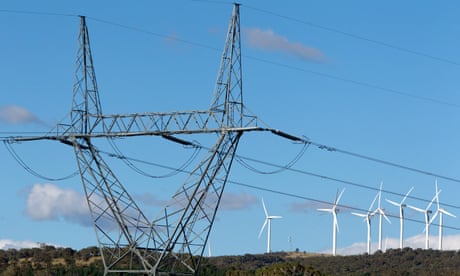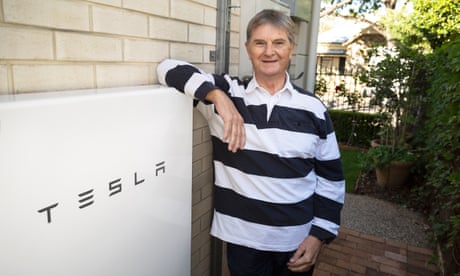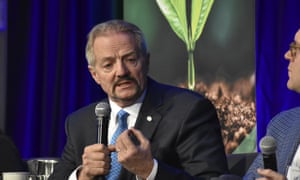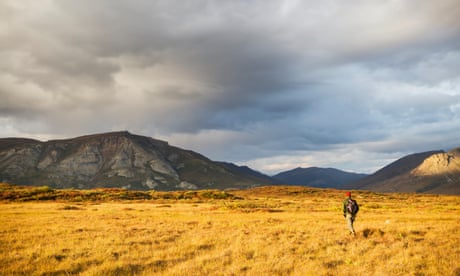A new report reveals the true wealth of the top 1%. Some hope coronavirus will even things out – but don’t bank on it


Polly Toynbee THE GUARDIAN Thu 21 May 2020
Inequality shot through the roof in Thatcher’s 1980s, aided by the big bang in the City when deregulation blew blowing the lid off top salaries.’ Workers on the London Stock Exchange, May 1988. Photograph: Tom Stoddart Archive/Getty Images
Ever since 2010, the government has claimed we have been “all in this together” during the lost decade of austerity. Rich and poor alike are taking a hit; that was what they told us.
When anyone complains of “rising inequality” – because that’s how it feels for so many people – the Tories and their commentariat brandish official statistics showing it’s not so. The dial on the Gini coefficient hasn’t shifted for years, they claim. The Gini coefficient is measured between 0 and 100 – with 0 indicating that income is shared equally among all people and rising to 100 in extreme income inequality. The story was that the rich also took a beating in this long period of austerity imposed by successive Tory governments – and they didn’t get richer.
Now we have proof that this tale isn’t true. Who gains?, a report by the Resolution Foundation released on Thursday, with researchers from the LSE and Warwick University, has found missing billions in earnings of the hyper-rich, all disguised as capital gains – profits from selling an asset for more than it was worth when it was acquired. The share of earnings of the top 1% were far greater and grew far faster than previously disclosed.
Capital gains are taxed at just 20%, unlike the 45% income tax rate for top earners. With a deft sleight of hand, wealthy individuals and business managers can take large amounts of their earnings in the form of shares or other assets to avoid it being taxed as income. Andy Summers of the London School of Economics says the line between the two taxes is “very blurred”.
The missing sum of money is enormous – the scale of the switch into capital gains vast. Taxable capital gains in the UK more than doubled between 2012-13 and 2017-18, jumping to £55bn. The top 1% are far richer than we thought, while the earnings of the top 0.1% have grown 50% more from 1996 to 2018 than previously measured. “A lot of capital gains are, in fact, just repackaged income going to the already-rich,” says Summers.
Who is gaining? Just 9,000 people, who made £1m or more in such a manner, accounting for the majority of the UK’s taxable capital gains. Adam Corlett, senior economist at the Resolution Foundation says these figures show “the top 1% account for £1 of every £6 of taxable income received.” The new figures show the top 1% take a massive 16.8% share of national income. He adds, “That scale of inequality should be addressed in post-pandemic Britain.”
But will it be? When polled, people express indignation at the soaraway earnings and wealth of the hyper-rich, but that doesn’t appear to swing elections in this perennially Conservative-voting nation.
Inequality, at its lowest in the late 1970s, shot through the roof in Thatcher’s 1980s, aided by the big bang in the City when deregulation blew the lid off top salaries, and the crushing of union power that strove to keep wages from falling behind in a high-inflation era.
Since the mid 1980s, inequality has plateaued, staying at a shocking high despite Labour raising lowest incomes, lifting a million children and a million pensioners out of poverty. But at least, people were told, inequality wasn’t actually getting any worse. Will it make a difference once people know that what they felt instinctively turns out to be true? Society is being stretched further and further apart across a growing social chasm.
The grotesque facts of Britain’s exceptionally high income inequality should have been enough without this new revelation. The High Pay Centre has clever ways to illuminate the way we live now: the average FTSE 100 CEO earns more in three working days than the average employee in a year. The 1,000 people featured in the 2019 Sunday Times Rich List together earned £771bn: that’s six times the cost of the NHS. There were 151 UK billionaires. To imagine owning a billion, here’s the centre’s best eye-popping fact: if you had earned £1,000 a day since Jesus died and kept it under the mattress, you still wouldn’t have accumulated £1bn.
One bogus justification for outlandish riches is that the wealthy give generously to good causes. Not true. The all-party parliamentary group on philanthropy reports the super-rich, those with over £10m, only give a median of £240 a year.
This year’s Rich List tells of Icarus-like plunges by some as their shares plummeted in the midst of the coronavirus crisis. But despite that, so far, the numbers shouldn’t send many shock waves through the Davos set: there are still 147 UK billionaires. The total wealth shared by this year’s rich listers has only fallen by 3.7% to £742.6bn, and the minimum wealth you need to join this year’s list stayed at the 2019 level of £120m. Before coronavirus struck, the authors of the list had expected a rise in billionaires – but this hardly looks like a wealth Armageddon. At least so far.
Those who waited in vain for bankers and their ilk to take their punishment for what they inflicted on everyone in the 2008 financial crash will be more wary this time. For all the hope that “things must change” in the aftermath of the pandemic, there’s no knowing yet if a political switch has been flicked to achieve a genuine “all in this together” recovery. But as the chancellor warns we are entering a “severe recession the likes of which we have not seen”, and after so many deaths including many public servants, there may soon be a lot less tolerance of out-of-control wealth.
Now we know riches sky-rocketed during austerity years of stagnant pay for everyone else, with top income and wealth under-taxed by devious devices. Voters with pitchforks may demand a “levelling up” in ways Boris Johnson certainly never intended.
• Polly Toynbee is a Guardian columnist
Ever since 2010, the government has claimed we have been “all in this together” during the lost decade of austerity. Rich and poor alike are taking a hit; that was what they told us.
When anyone complains of “rising inequality” – because that’s how it feels for so many people – the Tories and their commentariat brandish official statistics showing it’s not so. The dial on the Gini coefficient hasn’t shifted for years, they claim. The Gini coefficient is measured between 0 and 100 – with 0 indicating that income is shared equally among all people and rising to 100 in extreme income inequality. The story was that the rich also took a beating in this long period of austerity imposed by successive Tory governments – and they didn’t get richer.
Now we have proof that this tale isn’t true. Who gains?, a report by the Resolution Foundation released on Thursday, with researchers from the LSE and Warwick University, has found missing billions in earnings of the hyper-rich, all disguised as capital gains – profits from selling an asset for more than it was worth when it was acquired. The share of earnings of the top 1% were far greater and grew far faster than previously disclosed.
Capital gains are taxed at just 20%, unlike the 45% income tax rate for top earners. With a deft sleight of hand, wealthy individuals and business managers can take large amounts of their earnings in the form of shares or other assets to avoid it being taxed as income. Andy Summers of the London School of Economics says the line between the two taxes is “very blurred”.
The missing sum of money is enormous – the scale of the switch into capital gains vast. Taxable capital gains in the UK more than doubled between 2012-13 and 2017-18, jumping to £55bn. The top 1% are far richer than we thought, while the earnings of the top 0.1% have grown 50% more from 1996 to 2018 than previously measured. “A lot of capital gains are, in fact, just repackaged income going to the already-rich,” says Summers.
Who is gaining? Just 9,000 people, who made £1m or more in such a manner, accounting for the majority of the UK’s taxable capital gains. Adam Corlett, senior economist at the Resolution Foundation says these figures show “the top 1% account for £1 of every £6 of taxable income received.” The new figures show the top 1% take a massive 16.8% share of national income. He adds, “That scale of inequality should be addressed in post-pandemic Britain.”
But will it be? When polled, people express indignation at the soaraway earnings and wealth of the hyper-rich, but that doesn’t appear to swing elections in this perennially Conservative-voting nation.
Inequality, at its lowest in the late 1970s, shot through the roof in Thatcher’s 1980s, aided by the big bang in the City when deregulation blew the lid off top salaries, and the crushing of union power that strove to keep wages from falling behind in a high-inflation era.
Since the mid 1980s, inequality has plateaued, staying at a shocking high despite Labour raising lowest incomes, lifting a million children and a million pensioners out of poverty. But at least, people were told, inequality wasn’t actually getting any worse. Will it make a difference once people know that what they felt instinctively turns out to be true? Society is being stretched further and further apart across a growing social chasm.
The grotesque facts of Britain’s exceptionally high income inequality should have been enough without this new revelation. The High Pay Centre has clever ways to illuminate the way we live now: the average FTSE 100 CEO earns more in three working days than the average employee in a year. The 1,000 people featured in the 2019 Sunday Times Rich List together earned £771bn: that’s six times the cost of the NHS. There were 151 UK billionaires. To imagine owning a billion, here’s the centre’s best eye-popping fact: if you had earned £1,000 a day since Jesus died and kept it under the mattress, you still wouldn’t have accumulated £1bn.
One bogus justification for outlandish riches is that the wealthy give generously to good causes. Not true. The all-party parliamentary group on philanthropy reports the super-rich, those with over £10m, only give a median of £240 a year.
This year’s Rich List tells of Icarus-like plunges by some as their shares plummeted in the midst of the coronavirus crisis. But despite that, so far, the numbers shouldn’t send many shock waves through the Davos set: there are still 147 UK billionaires. The total wealth shared by this year’s rich listers has only fallen by 3.7% to £742.6bn, and the minimum wealth you need to join this year’s list stayed at the 2019 level of £120m. Before coronavirus struck, the authors of the list had expected a rise in billionaires – but this hardly looks like a wealth Armageddon. At least so far.
Those who waited in vain for bankers and their ilk to take their punishment for what they inflicted on everyone in the 2008 financial crash will be more wary this time. For all the hope that “things must change” in the aftermath of the pandemic, there’s no knowing yet if a political switch has been flicked to achieve a genuine “all in this together” recovery. But as the chancellor warns we are entering a “severe recession the likes of which we have not seen”, and after so many deaths including many public servants, there may soon be a lot less tolerance of out-of-control wealth.
Now we know riches sky-rocketed during austerity years of stagnant pay for everyone else, with top income and wealth under-taxed by devious devices. Voters with pitchforks may demand a “levelling up” in ways Boris Johnson certainly never intended.
• Polly Toynbee is a Guardian columnist

















